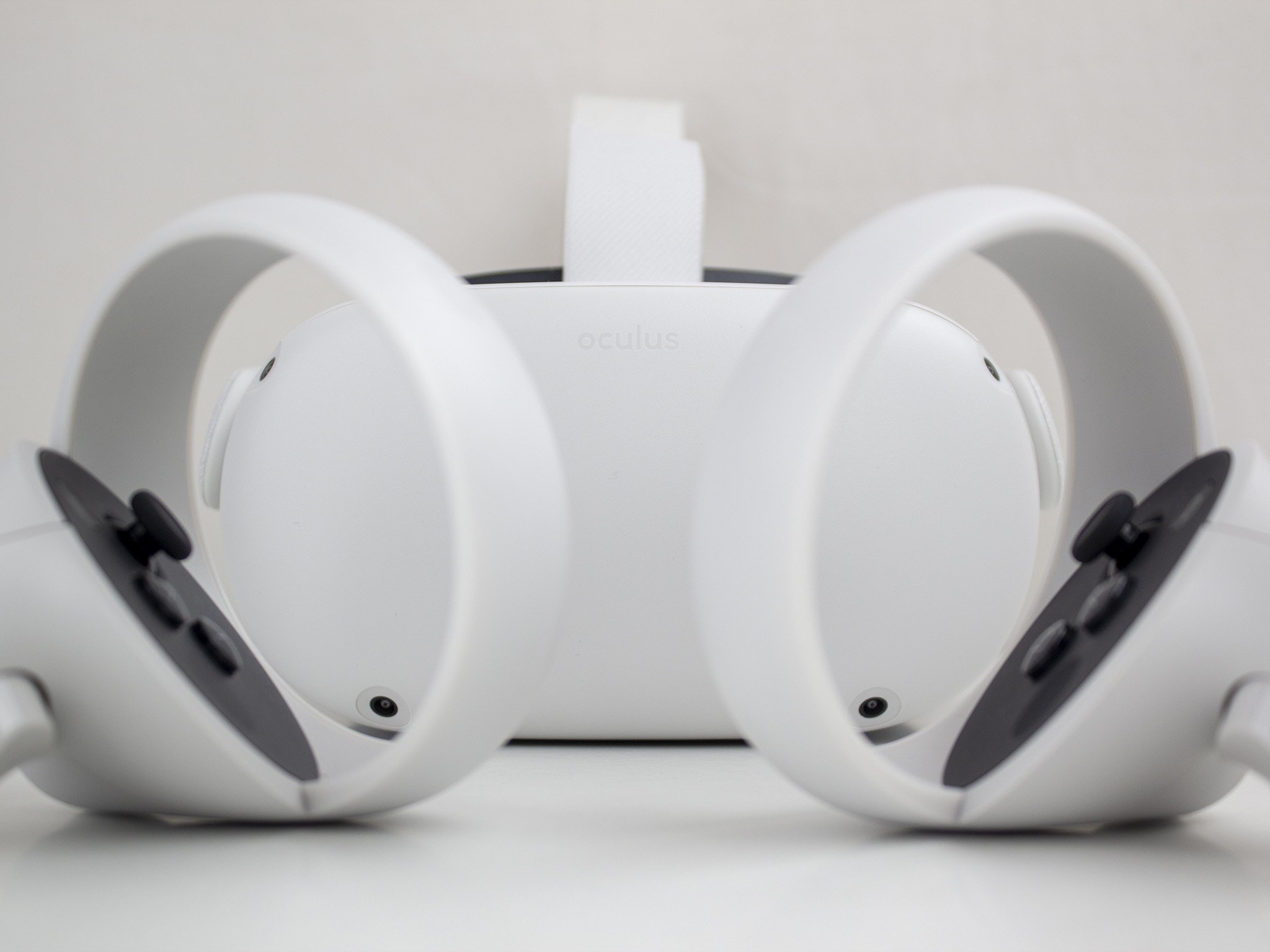When the original Oculus Quest was announced in September 2018, even Facebook didn't expect it to do as well as it did (as evidenced by the fact that it could never keep the Quest in stock). The Oculus Quest experience went beyond what was expected of a VR headset by being more than just affordable — it was as easy to use as a video game console. Since that launch, Facebook has acquired several VR game development studios, brought several developers onboard with its Oculus Store, and changed the paradigm of what people expect from the standalone VR experience.
The Oculus Quest 2 promises to one-up that experience in every way, with a processor that's three entire generations newer than the one in the original Oculus Quest, enhanced ergonomics with a lighter and smaller headset, a significantly higher-resolution display, brand new lens design, redesigned controllers, and more accessories than you can shake a stick at. Facebook also has ramped up its stock this time around and, unlike the PS5 or Xbox Series S/X, seems to be actually obtainable this year.
On top of all this, the Oculus Quest 2 is $100 cheaper than the original Oculus Quest, and the more expensive model features double the storage. Is this the VR console we've all been waiting for?

Bottom line: The Oculus Quest 2 is a huge improvement over the original, and it promises to get even better over time. Forced Facebook integration is going to upset some people (and parents) but, for most people, this is going to be the best VR experience you've ever had.
Pros
- Huge performance improvements
- Impressive display clarity
- Truly amazing price
- Super easy to set up and use
- Portable
- Lots of developer support already
Cons
- IPD adjustment won't work for everyone
- Display black levels are noticeably worse than Quest 1
- Forced Facebook login
- Battery life is disappointing
Oculus Quest 2 The basics
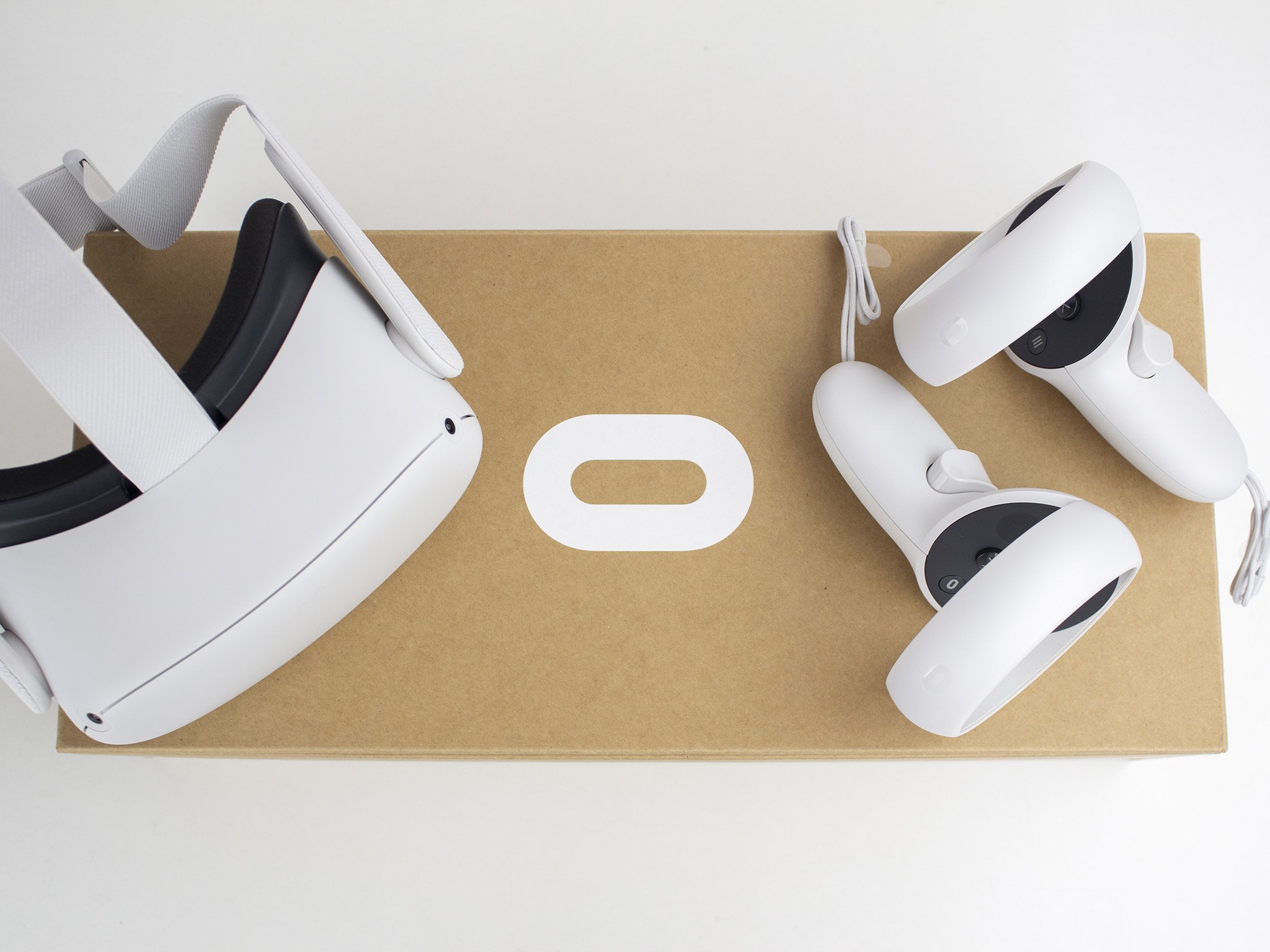
If you've never used the original Oculus Quest (or played anything in VR), here's the lowdown. Like a PlayStation, Xbox, or Nintendo Switch, the Oculus Quest 2 is a standalone console, one designed with VR in mind. It doesn't require a TV, but it can display a flat version of what's happening in VR by casting to popular smart TVs and Google Cast devices (so that everyone in the room can see what's happening).
The first time you turn on your Oculus Quest 2, you'll need to sign in with a Facebook account using the Oculus app on your smartphone. Once you've logged in, you'll need to decide if you want to experience VR while standing or while seated. If you choose a standing (room-scale) experience, you'll be asked to use your controller (and the built-in cameras) to draw safe boundaries around your room so that you don't crash into anything valuable. It's a lot less intimidating than that might make it sound.
In general, you'll be getting your games and apps from the official Oculus Store, which can be accessed either on the Quest 2 or via the Oculus app on your smartphone. The box comes with everything you need to play: the Oculus Quest 2 headset, two controllers, a USB Type-C cable, and a charging adapter to plug into an outlet.
That's it. You don't need external sensors or cameras, nothing to power the thing (other than a full battery, of course), and nothing else to experience amazing VR anywhere you want.
All the latest news, reviews, and guides for Windows and Xbox diehards.
A next-gen upgrade
Oculus Quest 2 Display and graphics

Every new console generation has, historically, delivered a certain wow-factor the first time you play it. We often find ourselves muttering How are these graphics so good? every time the on-screen character moves around the next corner or into that wide-open field, grass waving in the wind. While the Oculus Quest 2 doesn't yet have games made exclusively for its new powerhouse processor, the difference between the two generations of Oculus Quest systems couldn't be starker to the human eye.
The most noticeable difference here isn't the powerful new processor — it's the new pixel-packed display. At 1832 x 1920 pixels-per-eye, this brand new "almost 4K" single LCD display packs in 50% more pixels than the PenTile OLED on the Oculus Quest. Being a single LCD instead of two separate displays connected to lenses, the Oculus Quest 2 melds the positives of the Oculus Rift S with those of the original Oculus Quest for a superbly crisp experience.

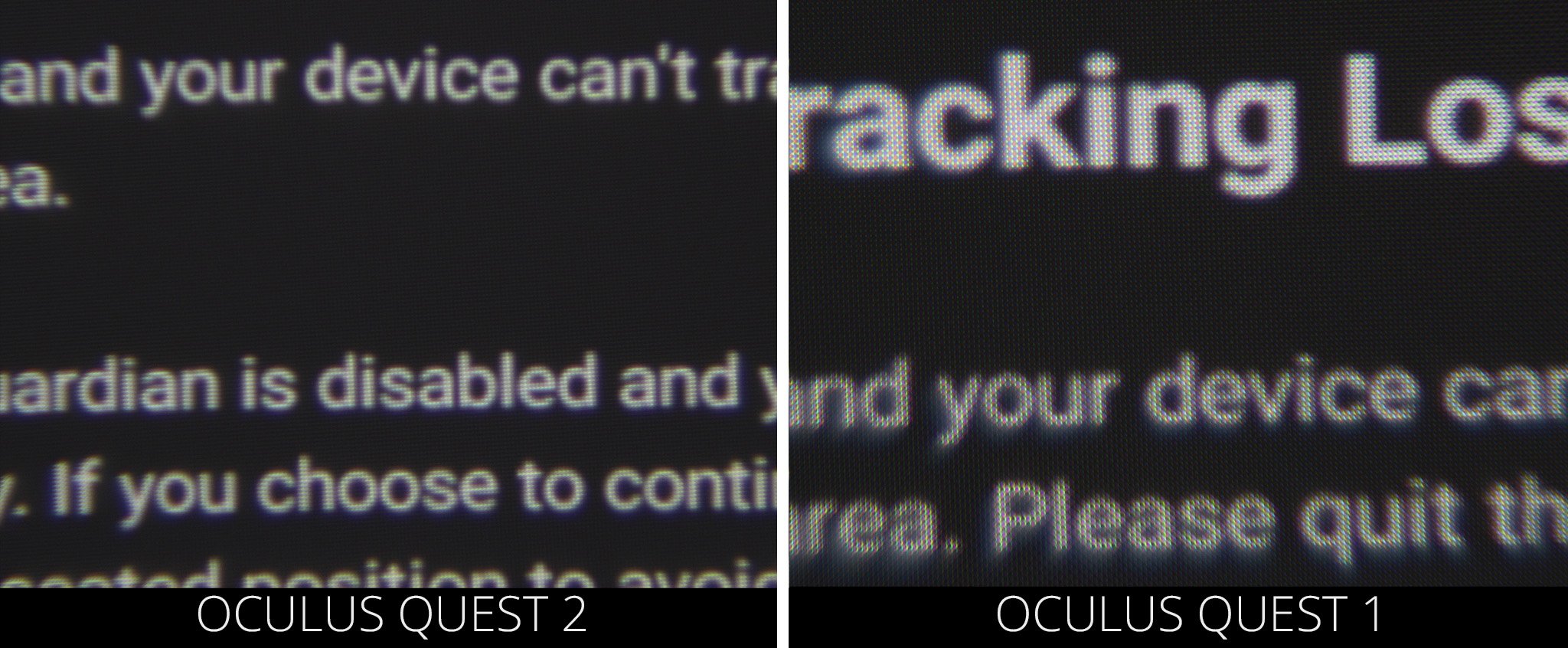
But it's not just the number of pixels that make this display crisper — it's the arrangement of them. The Oculus Quest used a PenTile arrangement, which places subpixels in a diamond shape: two small green subpixels on the left and right corners, and larger red and blue subpixels on the top and bottom corners. When put into a square grid, these diamonds leave a black space in-between, creating large gaps that human eyes can easily see in VR since the display is just centimeters from our eyes. The images above give you a good idea of what to expect, but the Quest 2 is even sharper than these images portrait.
The Oculus Quest 2 utilizes an RGB-stripe display, which puts a tall green, red, and blue subpixel right next to each other to create a proper square. These squares fit much more neatly together in a grid, resulting in pixels that are closer together. Combine that with the fact that there are 50% more pixels on the Oculus Quest 2's display and you'll quickly understand just how much crisper this display looks. Everything from distance detail to up-close text is ridiculously easier to see, and it makes worlds so much more immersive because it doesn't feel like you're always looking through a mesh filter.
| Category | Oculus Quest 2 |
|---|---|
| Display Type | RGB-stripe fast-switching LCD |
| Display Resolution | 1832 x 1920 per eye |
| Processor | Qualcomm Snapdragon XR2 |
| Memory | 6GB |
| Storage | 64GB or 256GB |
| Wireless | Wi-Fi 5 and Wi-Fi 6, Bluetooth 5.0 LE |
| Ports | USB Type-C, 3.5mm audio jack |
| Audio | Built-in speakers, support for headphones |
| Headset Battery | Built-in rechargeable Li-Ion |
| Headset Battery Life | 2-3 hours |
| Controller Battery | 1x AA per controller |
| Controller Battery Life | 4x the Original Oculus Quest |
| Dimensions | 191.5mm x 102mm x 142.5mm |
| Weight | 503g / 1.1lbs |
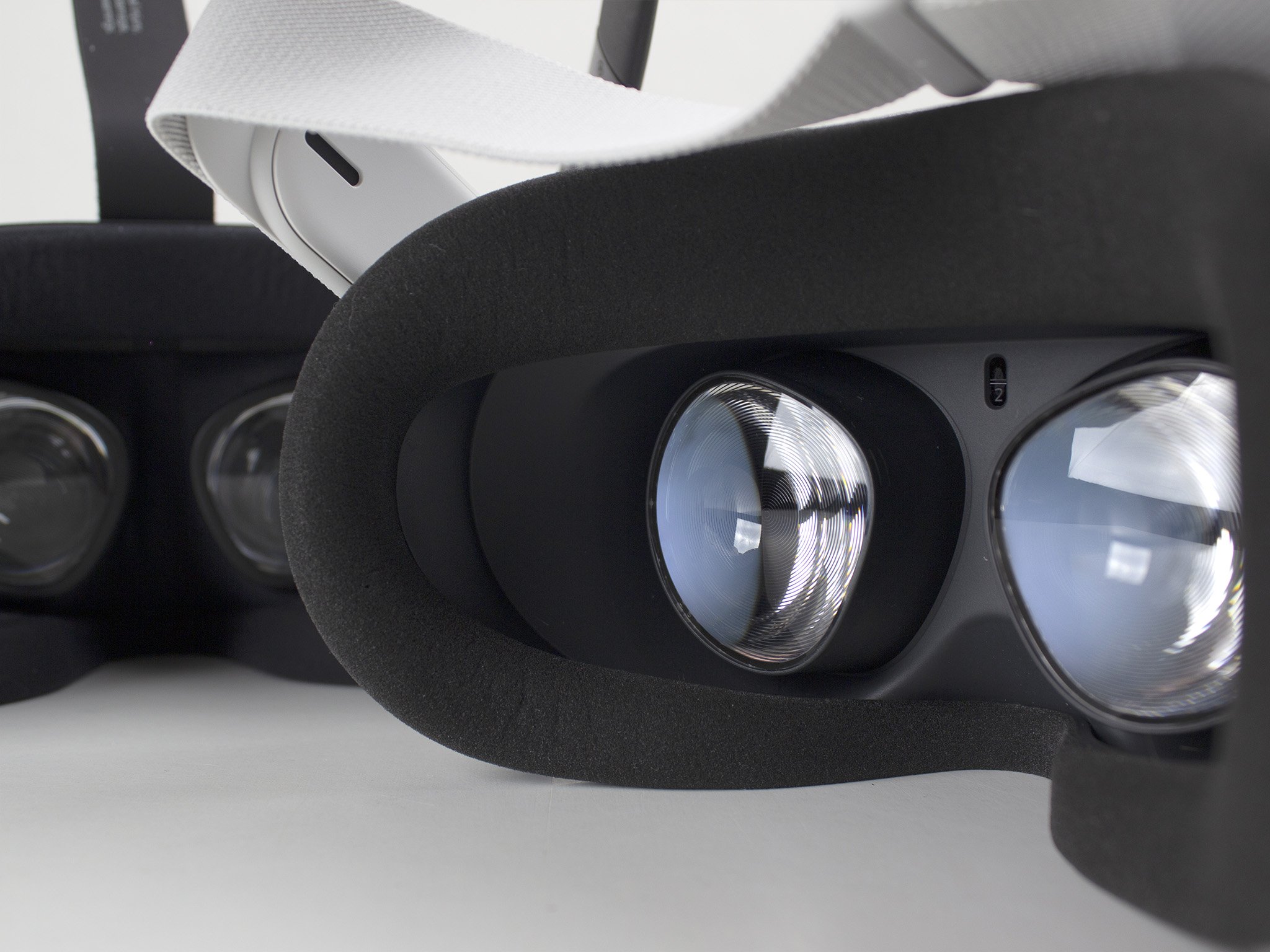
The best part about having a significantly higher-resolution display is that all games, even the ones that aren't specifically optimized yet for the Oculus Quest 2, will get an immediate upgrade. This new display isn't just more pixel-dense though, it also runs at a higher framerate than the original Quest. At 90Hz, the Oculus Quest 2 feels palpably smoother than the Oculus Rift S, and dramatically smoother than the original Oculus Quest, which ran at 80Hz and 72Hz, respectively.
At 90Hz, the Oculus Quest 2 feels palpably smoother than the Oculus Rift S, and dramatically smoother than the original Oculus Quest
As of launch, Facebook has yet to roll 90Hz out support for developers officially, but many apps and experiences from Facebook (and developers on Sidequest) are already running in 90Hz, and the difference is readily apparent. Absolutely everything feels immediately smoother and more realistic, and a higher refresh rate also means that fewer people will have difficulty with motion sickness. While motion sickness hasn't been a widespread problem in VR for half a decade now, there are still a few folks that experience it with lower refresh rates.
Just as you would expect from a brand new video game console, the Oculus Quest 2 features a significant improvement in graphics quality when compared to the original Oculus Quest and is very much a "next-generation" console that's launching alongside the PS5 and Xbox Series S/X. Much of these improvements come from the brand-new Qualcomm Snapdragon XR2, a system-on-a-chip (SoC) that's more than three generations newer than the Snapdragon 835 found in the original Oculus Quest.
The Oculus Quest 2 is very much a "next-generation" console launching alongside the PS5 and Xbox Series S/X.
For reference, the Snapdragon 835 was a smartphone chipset released in March 2017, while the Snapdragon XR2 is a custom VR chipset based on 2020's Snapdragon 865. Along with the assumed performance difference expected in a chipset that's three years newer, Qualcomm has packed some brand new abilities like new shaders, support for 90Hz displays, the ability to push 3x higher resolution, and an 11x improvement in AI calculations.
Right now, there aren't any games built from the ground-up for the Quest 2 — Facebook isn't allowing this right now, anyway, but will in the future. Until then, we'll see Quest games get enhancements here and there throughout. In addition to a higher resolution and a smoother framerate, you'll notice changes like higher quality models, higher resolution textures, more distance and up-close detail everywhere, real-time lighting, bloom effects, better particles, and improved shaders.
We've put together a graphics comparison between the initial batch of games with enhancements for the Oculus Quest 2. While these are certainly noteworthy for several reasons, you should expect the gulf in visual quality to grow wider as developers have more time with the Quest 2.
A better experience
Oculus Quest 2 Performance and battery life

The original Oculus Quest, while amazing in its own right, was very obviously held back by the aging mobile chipset that powered it. Even though the Oculus Quest 2 is also powered by a mobile chipset, three years of silicone advancements and a partnership with Facebook's own research division has yielded something even more impressive than I expected. Despite bumping the resolution up by 50% and increasing the refresh rate by 25%, the Quest 2 is lightning fast at everything it does.
From menus to loading times, the Quest 2 is a substantial improvement over the original in every way. While playing games, pressing the Oculus Home button instantly brings up the universal home menu. Likewise, clicking record video or take screenshot results in an instant response from the system, while the original might have taken a second or two (sometimes longer). Plus you'd occasionally see hitching and stuttering along the way — something I didn't experience on the Quest 2 at all.
I can recall several times, even during the review period when I was directly comparing games between the two headsets, where the recorded video from the original Oculus Quest would become corrupted for no apparent reason. This is yet another thing I didn't experience on the Quest 2, and it all adds up to a more consistently flawless execution of what you might hope or expect from a VR console.
Casting to a TV or Chromecast has also seen a significant improvement in some games, while just a slight improvement in others. Regardless of the reason, you'll find that people in the same room as you will also have a more enjoyable experience watching a 2D version of what's happening in VR thanks to higher quality video output and significantly lower latency between your actions and what's happening on the TV.
Support for Wi-Fi 6 means faster downloads, a more consistent connection, and even better wireless streaming. We'll cover streaming performance in depth below, but know this: Wi-Fi 6 makes a substantial difference in wireless streaming performance.
Just about the only thing that's not better is the battery life.
Just about the only thing that's not better is the battery life. Ironically enough, estimates show that the battery life on the Quest 2 is roughly 30 minutes shorter than the original Quest. That puts it at around 2-3 hours of gameplay before you'll have to charge it up again. You can get around that limitation by getting one of the great accessories for the Quest 2, like the Elite Strap with built-in battery, or even plugging a regular USB Type-C power bank into it while playing.
Something old, something new
Oculus Quest 2 Comfort, design, and sound
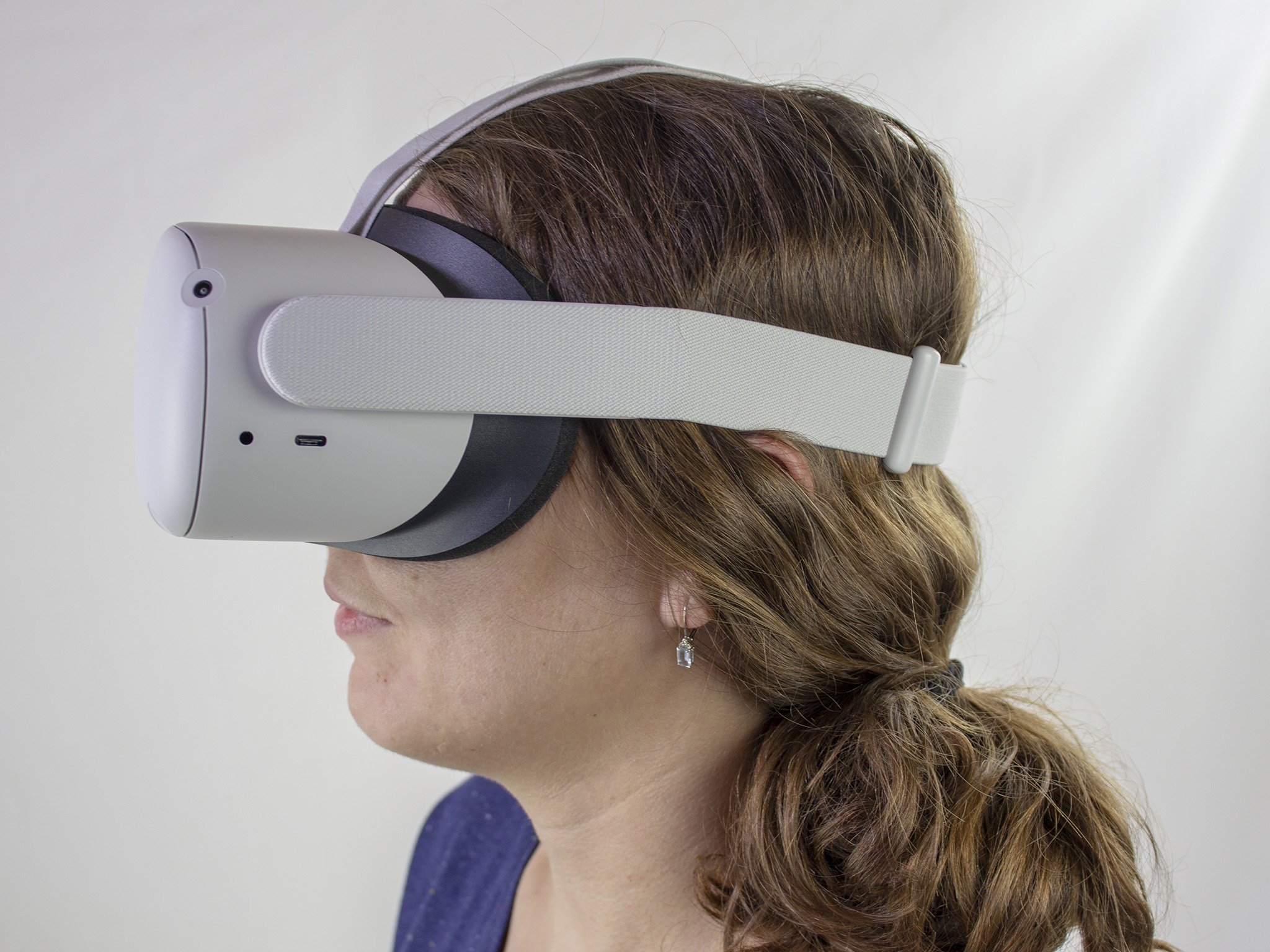
When comparing the Oculus Quest 2 against the original Oculus Quest, almost everything about the Quest 2 screams newer tech. It's smaller! It's lighter! It's more powerful! It uses a cloth and velcro head strap — wait, what?

While it seems a bit bizarre for Facebook to have reverted from a more rigid headstrap to what feels like an "old" VR standby, I was pleasantly surprised to find my initial thoughts on the strap to be incorrect. Let's get the negatives out of the first though, shall we? I hate resizing this thing. On the back of the strap, you'll find two plastic pieces that can be pulled apart or brought closer together to tighten or loosen the strap.
While this sounds great in practice, and rather simple to boot, the fact that there's hair on most people's heads turns this simple task into a rather difficult one and, if you clumsily grab your hair and pull, a painful one. If you're the only one using the Quest 2 in your home, it's not likely you'll have an issue. The new straps are super comfortable to wear, do a great job of balancing the weight of the headset across your entire skull, and actually hold their position rather nicely.
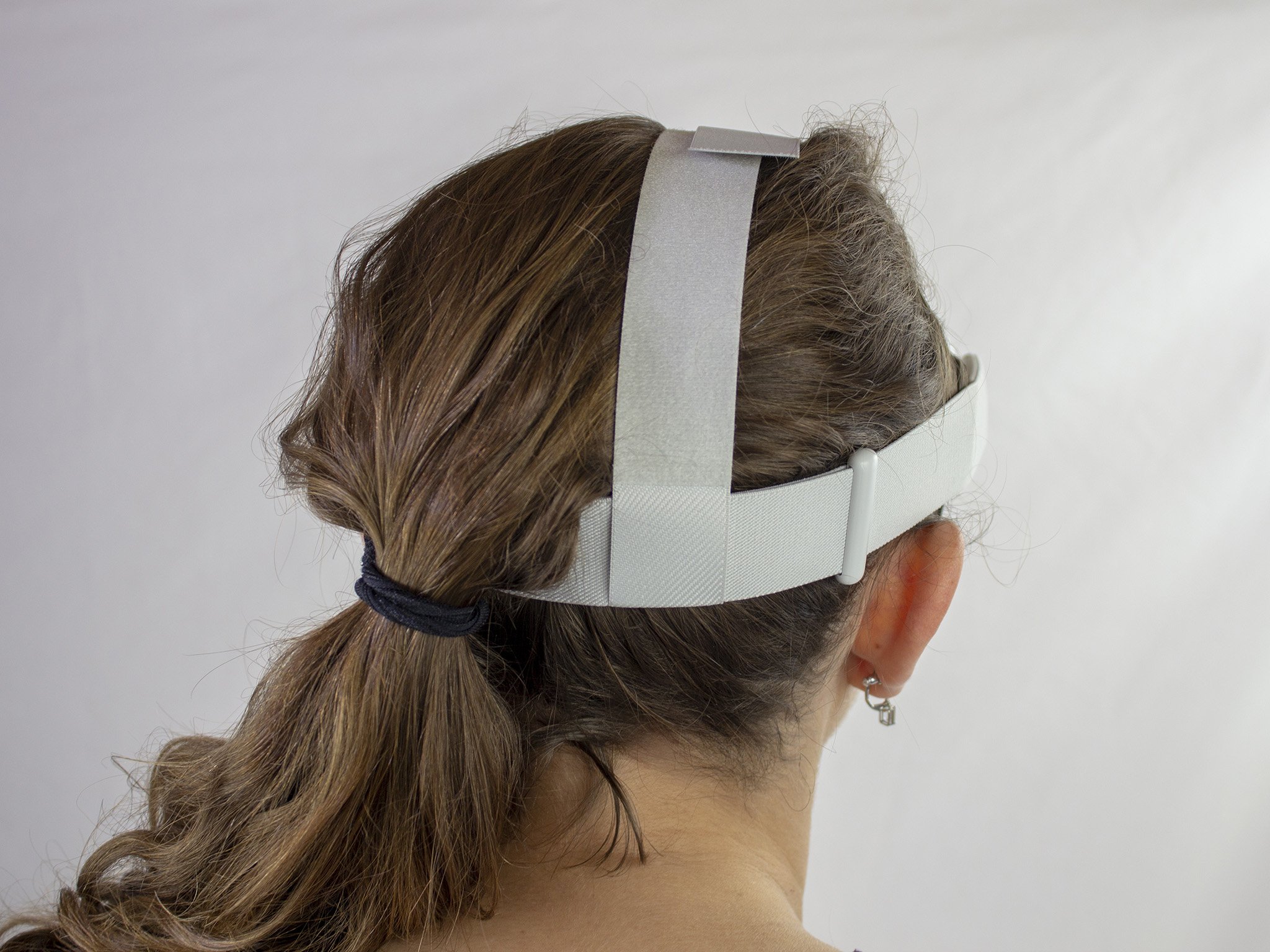
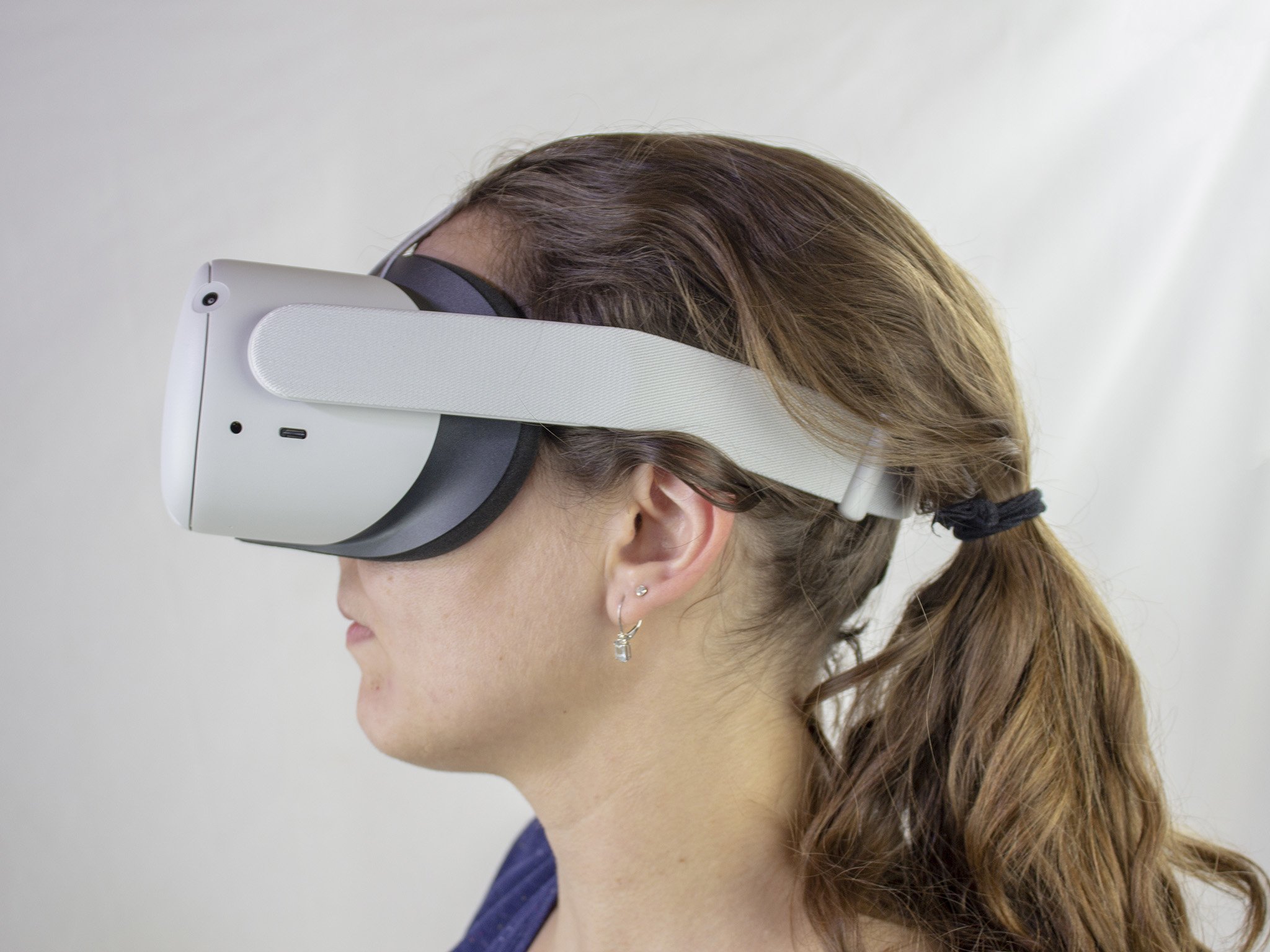
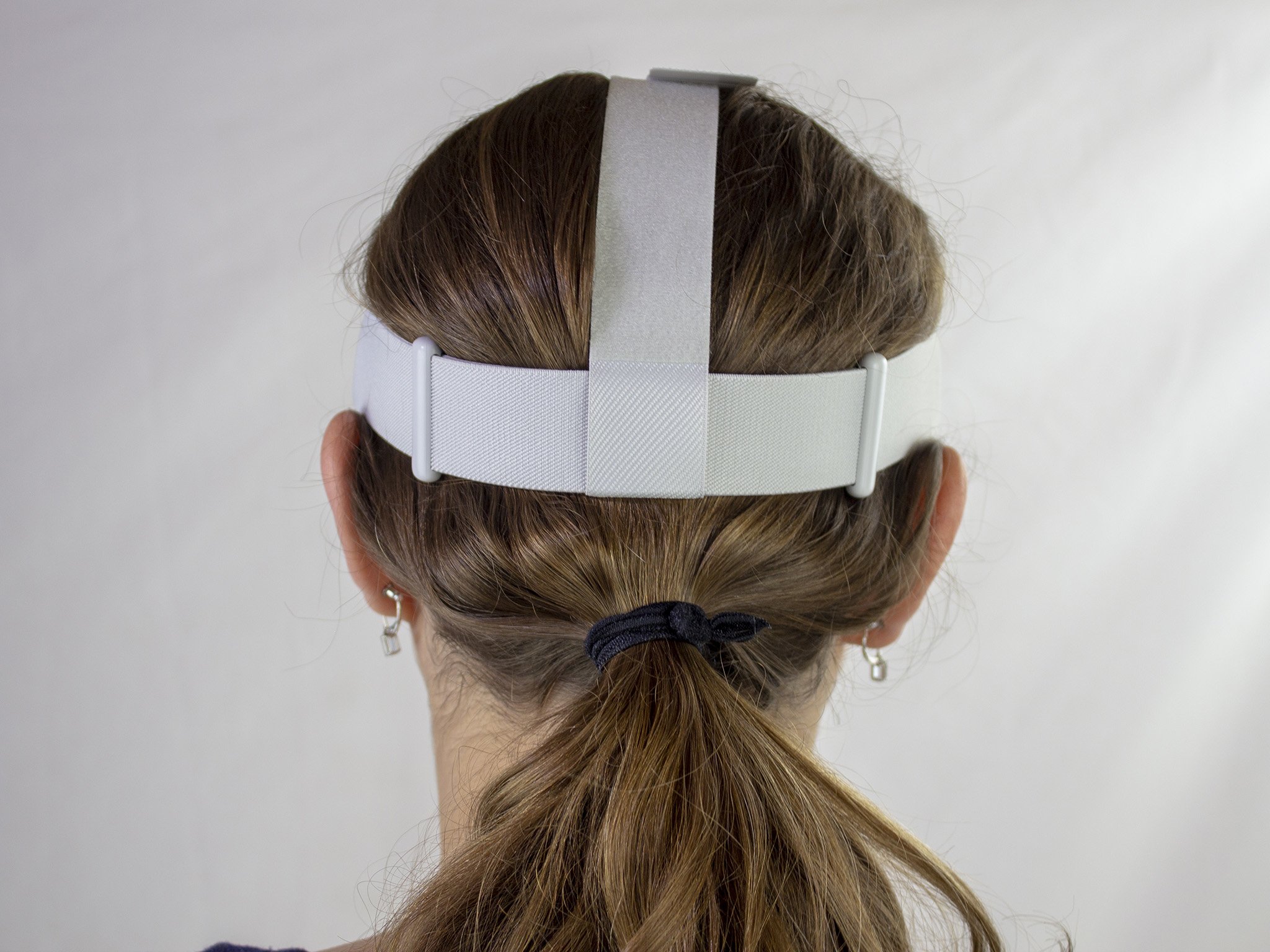
The strap adjustment issue really only rears its ugly head when passing it around for others to play, as it's just more complicated than I would like. You'll also likely struggle a bit with it at first if you have long hair (as evidenced by the awkward photos above), but after a period of time it becomes second nature.
Still, despite the annoyance with adjusting it, these straps are quite a bit better than the ones on the original Quest because they actually grip the back of your cranium instead of the mid-point. The Oculus Quest 2 fit all head sizes quite nicely in my testing, all the way down to my 6-year-old son's head.
Aside from being lighter and smaller, I also really liked the redesigned foam facial interface, which significantly helped pad the headset against my cheeks and forehead. These pads are thicker and more supportive, yet just as easy to remove as the original ones. That makes changing these pads out nice and easy when multiple people are playing, making things a whole lot more sanitary. There's even an adapter that comes in each box to add additional space for folks that need glasses while playing.
if you've got an IPD over 70mm, you're out of luck.
The lenses on the inside feature a brand new housing design, including a new physical spacing adjustment system. Everyone's head is just a little different, and that difference includes the distance between eyes. The average distance between pupils, or inter-pupillary distance (IPD), is somewhere around 63mm. As such, the Oculus Quest 2 comes out of the box using this setting. Users who have eyes spaced closer together can push the lenses inward toward each other, while users with eyes slightly farther apart can push them out.
The lenses snap into three preset positions, the default 63mm distance being denoted by a "2" right in-between the lenses. Pushing them outward to the "3" preset spaces them out at 68mm, while pushing them inward to the "1" preset makes them 58mm apart. Notice something missing here? That's right, if you've got an IPD over 70mm, you're out of luck.
While Facebook's new lenses are designed to fit approximately a 3mm range within each preset, it gets really uncomfortable if you're playing cross-eyed. IPD over 70mm is a small minority, but it's still a minority of gamers that are going to be shut out because of a design decision. Since the Quest 2 utilizes a single LCD display, like the Oculus Rift S, we're hoping Facebook will figure out a way to bridge the gap for these gamers.
Even when you've got an IPD between 56mm and 70mm though, you're going to find that the "sweet spot" might be a little hard to find at first. That's the position on your face that makes the lenses the clearest. For me, this always felt like the headset was sitting ever-so-slightly too high on my face, but I forgot about it after a few seconds.

The Oculus Quest 2 sports built-in speakers, just like the original Oculus Quest, but this time around they're built around the idea of replacing the head strap. You'll find these speakers on the inside of the rotating strap arm, one on each side of the headset, and can be used with any compatible Oculus Quest 2 head strap. Yes, that means you can remove the strap and replace it without performing some wacky wiring hijinx and worrying about ruining your headset.
The quality of the speakers is a notable jump from the original Quest, with louder volume, better bass, fuller sound (read: less tinny), and even better 3D audio. Unlike the Quest or Rift S, I found playing rhythm games like Beat Saber were actually pretty enjoyable using these speakers. Previously, the sound quality was far too lacking to even bother. If you want the absolute best sound though, you should slap on a pair of wired headphones and plug them into that 3.5mm jack on the side.
The Quest 2 does not support Bluetooth headphones because there is too much latency introduced, which would result in some strange human sensory issues and general no-no's in the world of VR comfort.
Some surprising changes
Oculus Quest 2 New controllers and hand tracking
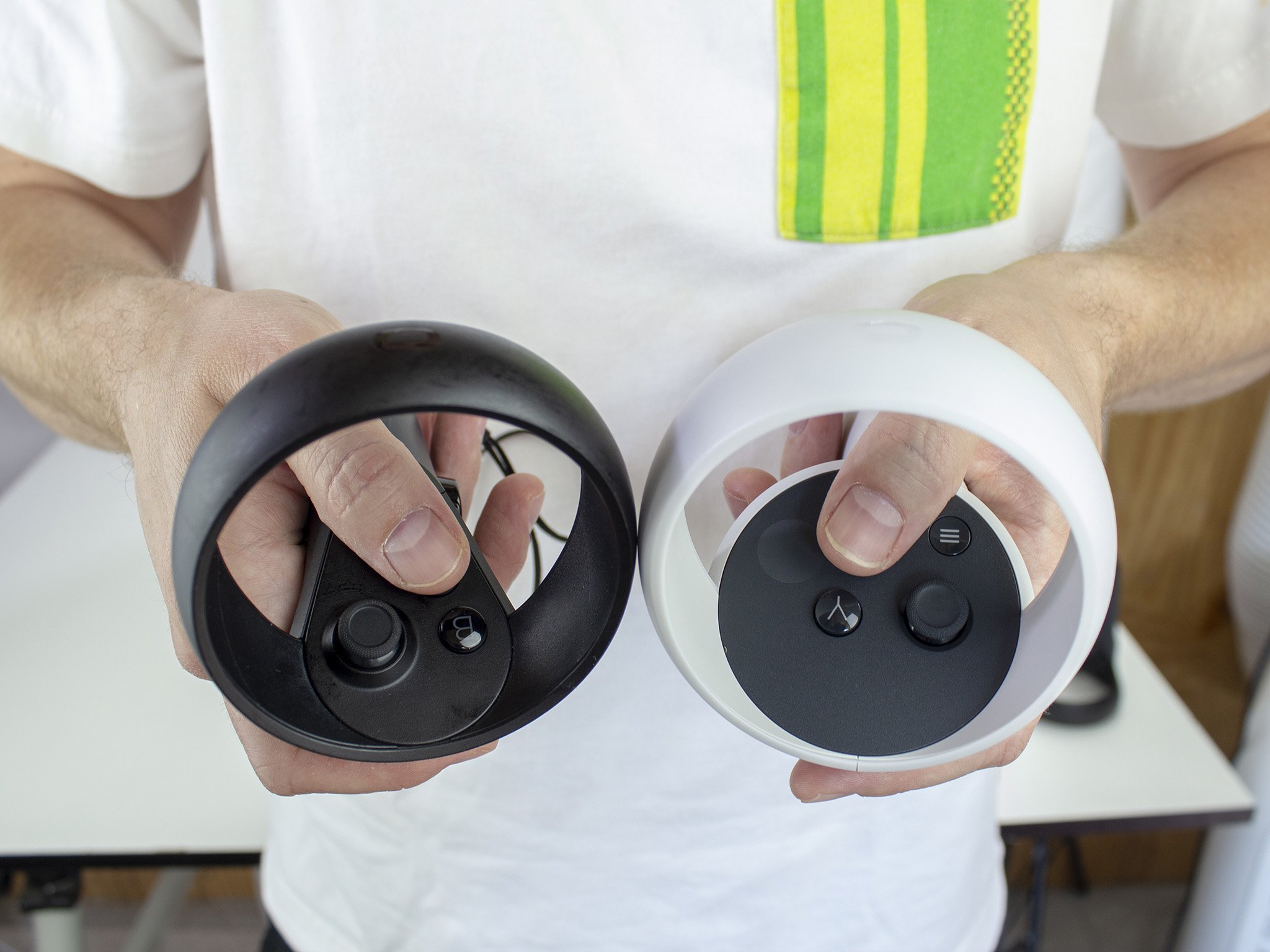
The Oculus Touch controllers have long been some of the best controllers in the VR industry. For the most part, the 3rd-generation Oculus Touch controllers that ship with the Oculus Quest 2 further improve upon an already excellent design, but they do feature one negative — they're a tad bigger. While that's good in some areas of the design, I found the wider grips to be uncomfortable for the first week of usage. Thankfully, my hand adjusted to the size difference, but some people might not have that experience.
Overall, these controllers feel a lot more solid than the previous Touch controllers, with plastic that feels like it would withstand more hits over time. The 2nd-gen Touch controllers were infamous for having a broken light ring, as the design tended to split when hit too hard. While you can do a lot to keep from hitting people, walls, or other objects while in VR, sometimes it's simply not possible to avoid clacking the controllers together.
Unlike the previous controllers, the new design makes it impossible to accidentally press the home and menu buttons.
Up top, you'll find that the spacing between buttons is a lot wider, and there's now a dedicated thumbrest for games that don't often use the face buttons for input. In addition to that, the Oculus Home and menu buttons have been moved directly under the joystick on each controller and are now concave. This design makes it essentially impossible to accidentally press during play, which is a godsend if you've ever played a game like Beat Saber and got regularly interrupted by pressing the menu or home buttons.



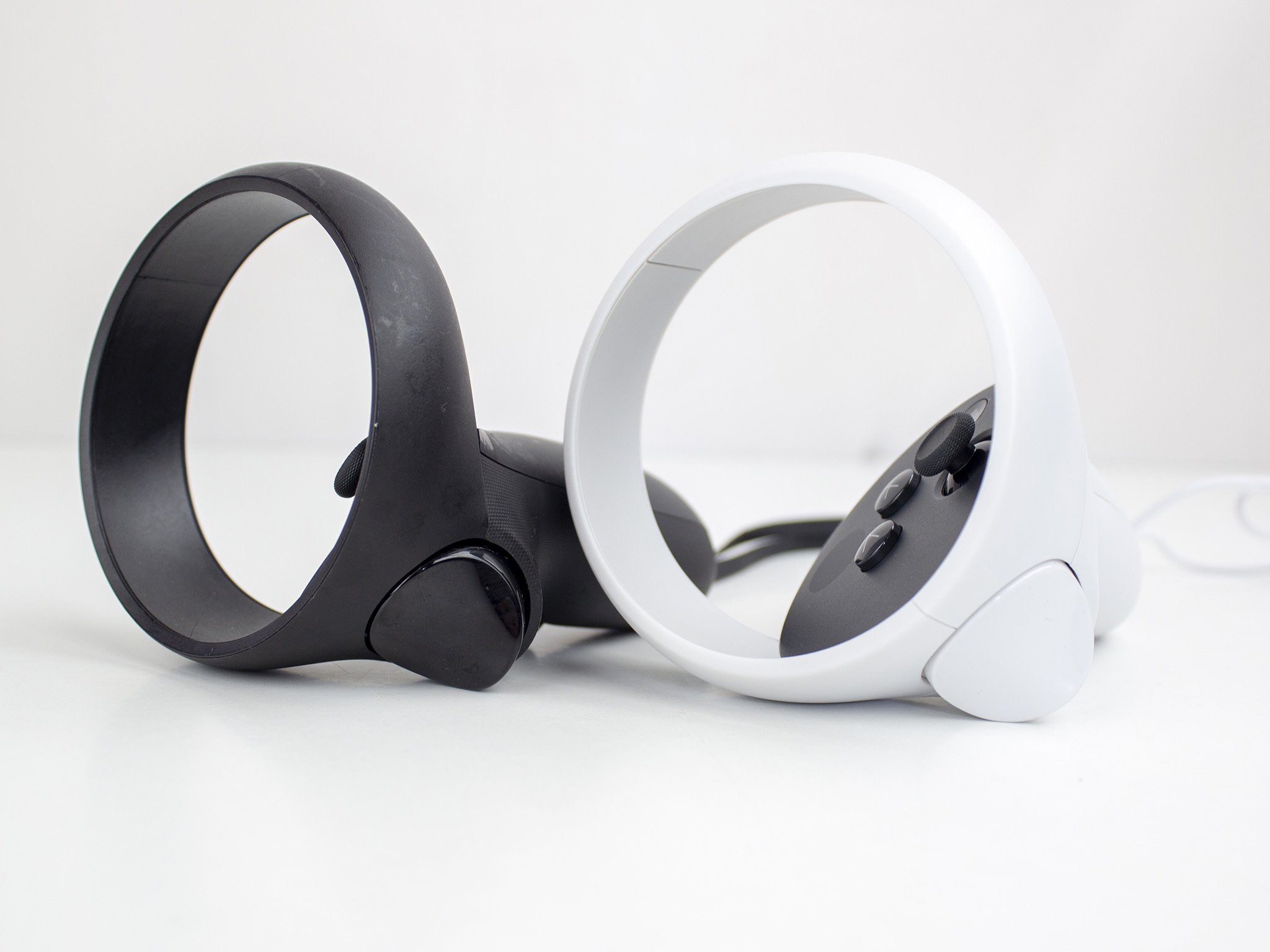
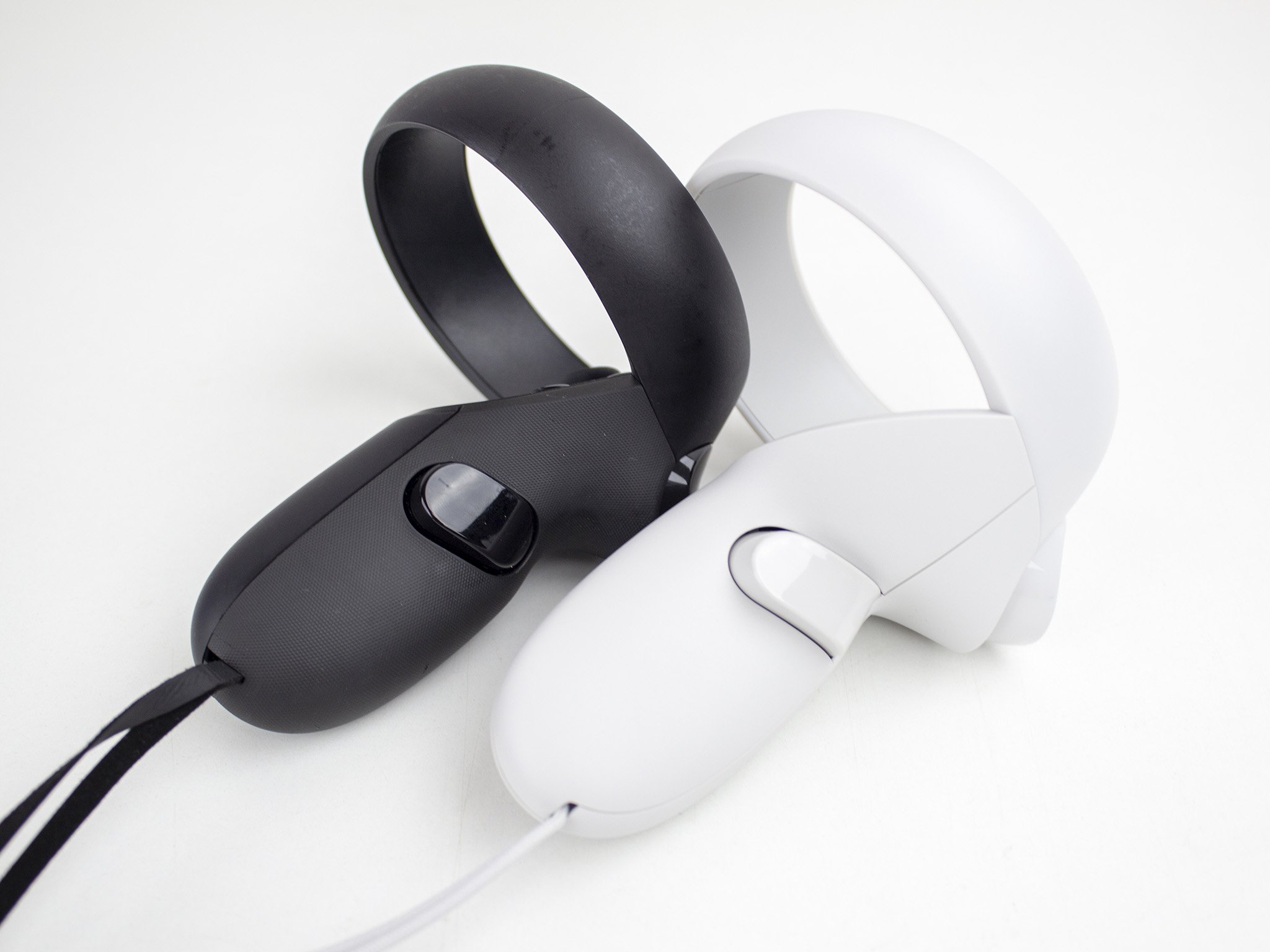
Each controller button, as well as each joystick, features a capacitive sensor to detect the difference between just touching the button and actually pressing it. The Trigger and Grip buttons are smoother than the 2nd-gen Touch controllers and feel really great to push in. In addition to this, Facebook packed in some more advanced haptic motors inside the controller. We don't have any examples of how these new motors could enhance future games, but expect games to take advantage of them sometime in the future.
For me, the absolute best part of the new controllers is the battery door. Yes, that sound crazy but, once again, if you've ever used the 2nd-gen Touch controllers from the Oculus Quest or Rift S, you'll know how easily they would slide off. This time around, Facebook is utilizing good old fashioned clips to lock the battery door into place instead of magnets. That was a way, way better decision, and I'm glad they made it.
The absolute best part of the new controllers is the battery door, which no longer falls off during play.
In the last 2 weeks, I didn't have the battery door fall off once during play. Contrast that with the 2nd-gen Touch controllers, where the compartment would come off practically every 30 seconds and you'll quickly understand how massive of a quality-of-life change this really is. On top of that, Facebook enhanced the design of the wrist straps to make them more durable and connect them to the controllers more easily (read: no tools required to remove).
Even though these 3rd-gen Touch controllers still use a single AA battery for power, Facebook was able to quadruple the battery life on the controllers, ensuring you won't be regularly changing out batteries. It's easy to use rechargeable AA batteries in place of those environmentally unfriendly disposables, thankfully, and removable batteries make it easy to change out if you forget to charge them.
Battery life enhancements were made, in part, by reducing the number of LEDs on the outer ring of the controller. While this could theoretically reduce tracking performance, I never once felt like these controllers were any less accurate than the 2nd-gen ones.
Just as we saw on the Oculus Quest, hand tracking on the Oculus Quest 2 is a rather sublime experience, even if it is a very limited one. By default, the Oculus Quest 2 will look for controllers at all times. When it doesn't find them, it'll automatically enable hand tracking, which uses the same front-cameras to see your hands and translate them into VR. The term is highly over-used in tech, but the first time your hands appear in VR it truly feels magical.
Hand tracking works best in a well-lit room and is generally a more pleasant experience when used for simple tasks. You can also choose to manually toggle between controllers and hand tracking, opting to press a button in the Quick Actions panel in settings instead.
Just putting on your Quest 2 to watch a movie or virtually hang out with friends is better done when you don't even have to bother with controllers. There are a handful of games that support hand tracking, but since it's not the most accurate tracking experience in the world, most games are best when using controllers. Yes, even the ones designed with hand tracking in mind.
RIP
Oculus Quest 2 Replacing the Oculus Rift
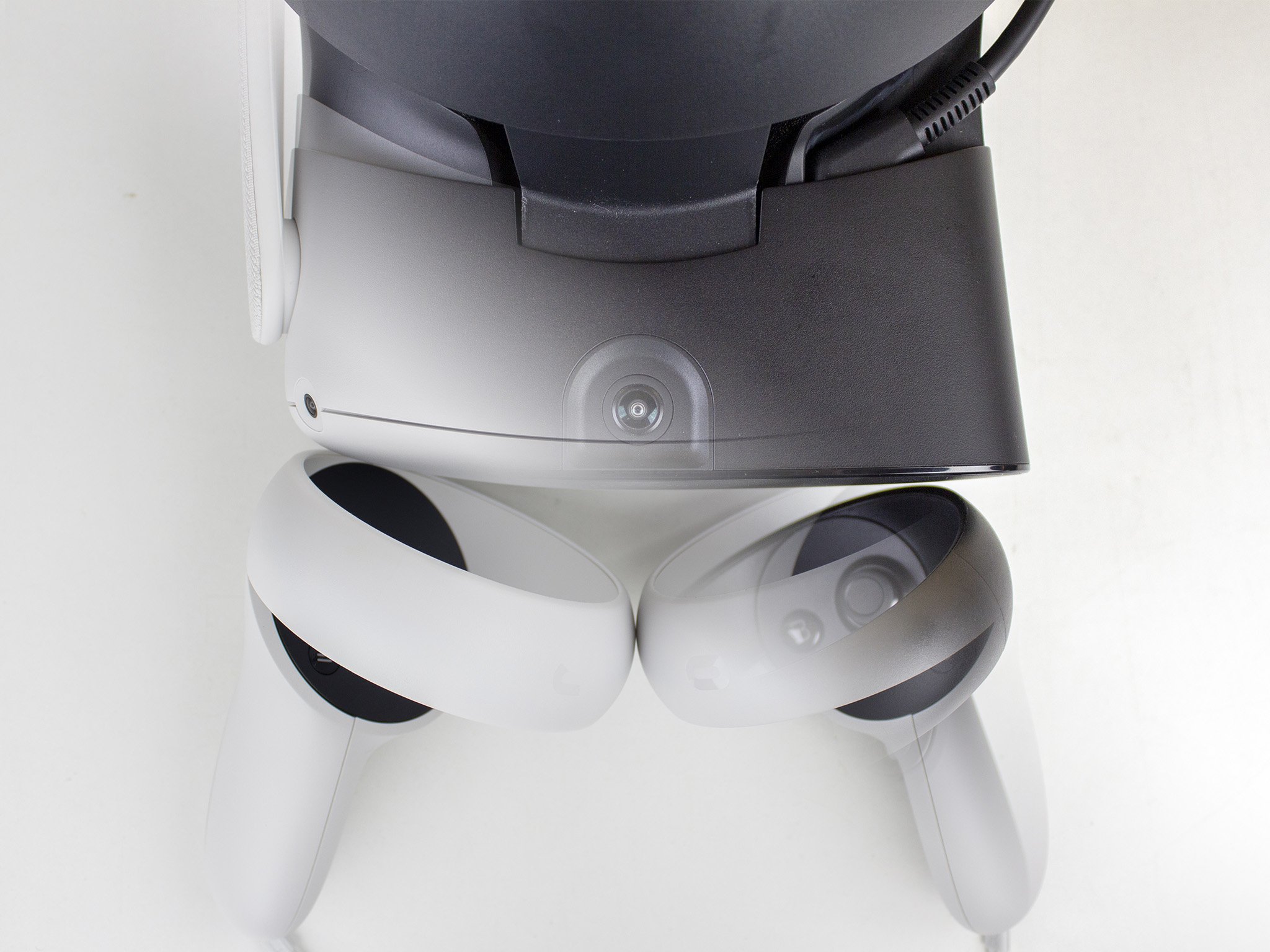
Facebook has officially discontinued the Oculus Rift S and the Oculus Quest, leaving the Oculus Quest 2 as the single way forward for the company's VR strategy. We saw Nintendo finally move to this model in the past few years with the Switch, which combined both portable and console divisions of the company and, like Nintendo, Facebook has now combined its portable and PC divisions into one solid product.
While the Oculus Quest 2 is most effective as a completely standalone, wireless headset, it can be hooked up to the computer officially via the $80 Oculus Link cable. Oculus Link is a 15-foot cable that plugs into your PC's USB Type-C port and turns the Oculus Quest 2 into a bonafide Oculus Rift, complete with the Oculus Rift home screen and all. In fact, you'll need to disconnect the cable completely just to get back to the Quest 2's home screen.
By default, the streaming quality through the Oculus Link cable is surprisingly soft. It's clearly a lower resolution (or more compressed) than what you'll get from a native Quest 2 game, which is a bit perplexing. Changing the quality settings in the Oculus App on the PC to high quality fixes this issue and makes it feel identical to an Oculus Rift S. That means, for $380, you can get a high-quality PC VR experience without any real hassle.
For me, the real killer app was Virtual Desktop, a 3rd-party app that costs $20 on the Oculus Quest store and enables you to wirelessly stream your PC's desktop to your Oculus Quest 2. While it sounds cool to see your PC's desktop in VR on an unimaginably huge screen, that's not the real draw of the app (in this case).
Wireless PC VR was a better experience through Virtual Desktop than the wired Oculus Link cable.
Instead, the focus is on Virtual Desktop's ability to wirelessly stream PC VR games to your Oculus Quest 2. That makes the Oculus Quest 2 the preferred way to experience VR on a PC without any wires at all, and the experience only gets better when you've got a faster Wi-Fi 6 router. In my case, I'm using the same Linksys AX6000 that I reviewed back in June. At the time, I wasn't too impressed with its abilities. Now that I've got an Oculus Quest 2, however, I've found that routers like the Linksys AX6000 are the perfect pair and create a nigh-perfect wireless VR experience.
In fact, playing PC VR games via Virtual Desktop was often a quicker and more pleasant experience than plugging in the Oculus Link cable, and it even provided a higher quality experience to boot. Let that sink in for a moment — wireless PC VR was a better and higher-quality experience through Virtual Desktop over a Wi-Fi 6 connection than the wired Oculus Link cable could provide. This truly feels like a next-gen VR experience all around, and that includes the PC VR streaming experience, even if it is an unofficial one.
A problematic variable
Oculus Quest 2 The Facebook equation
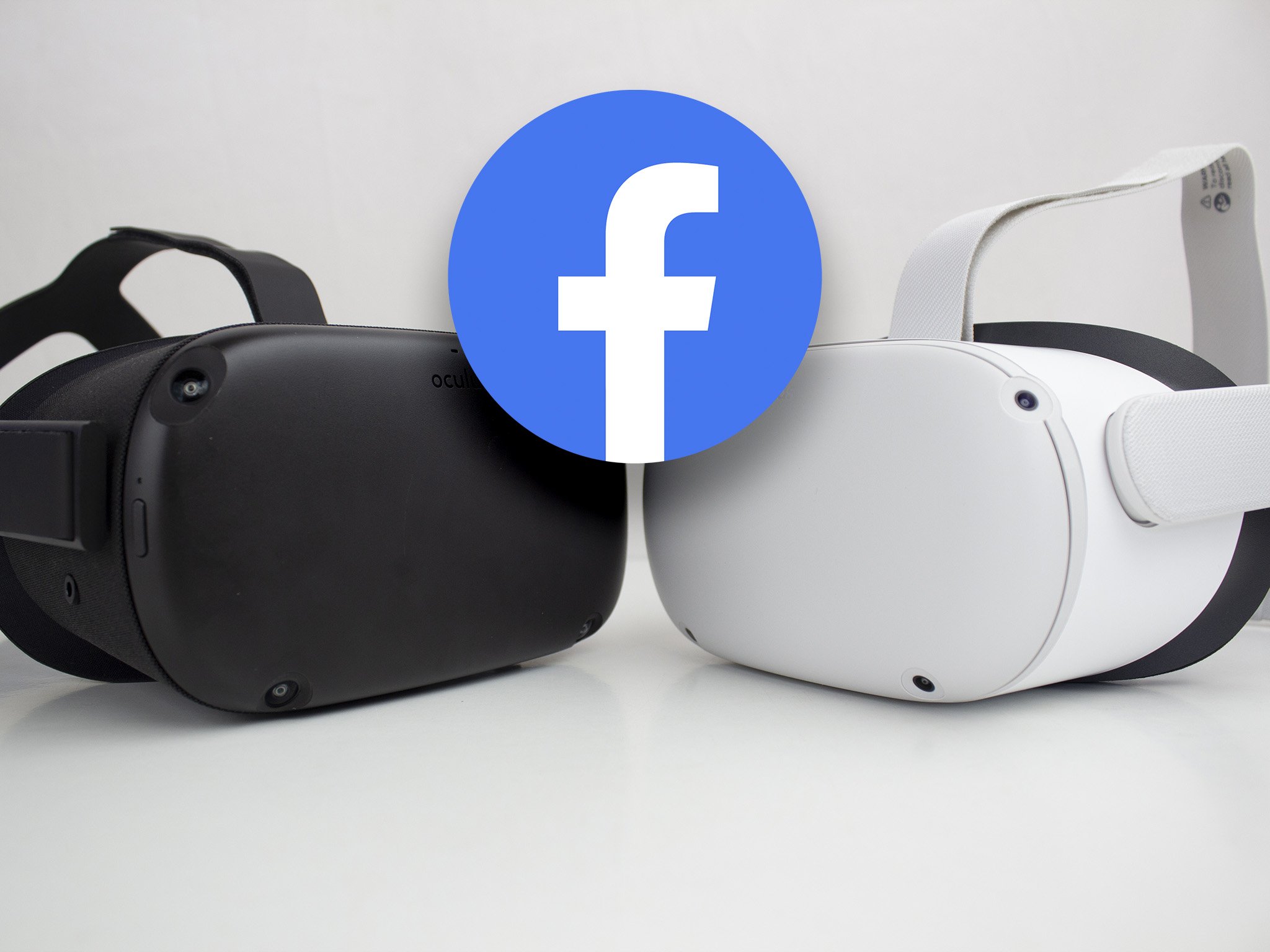
I know you're supposed to save the best for last, but conventions are boring and I like to defy them. Thus far, I've had mostly very, very positive things to say about the Oculus Quest 2. It's better than the original in basically every way, but there's one thing that the Quest 2 is launching alongside and bringing to the future of Oculus: forced Facebook login.
As of October 1, all new Oculus customers have to sign into their headsets with a Facebook account. If you're buying an Oculus Quest 2, that means you, regardless of whether you currently use an Oculus account. Simply put, you can't use the Oculus Quest 2 at all without a Facebook account. You can't even get to the home screen to play a game without one. This is officially, completely a Facebook product, and that's how it's going to stay.
If you hate Facebook and don't want any part of it, here's where you get off the train.
Good as it may be, the requirement to use a Facebook account is going to deter some people. It also means that you can't just create some alias account without your real name, because that's against Facebook's policies.
It also means that folks under 13 are going to have to use a parent's account if they want to use the Oculus Quest 2. That's also going to be a problem for some parents, and it makes it difficult to get younger ones into VR. Granted, Facebook (and many VR companies) recommend staying away from VR until you're 13, anyway. I'm not someone who subscribes to this train of thought, but the account situation fits the rest of the narrative, so at least they're consistent.
In the end, it's going to boil down to whether or not you trust Facebook to any degree. I'd wager to say that most people don't care and are going to use Facebook, regardless. Having to use a Facebook account is likely more a convenience than anything, and automatically having a list of friends populate in your headset is a big plus as well. After all, Sony requires you to use a Sony account on a PlayStation, Microsoft uses Microsoft accounts on an Xbox, and Nintendo uses Nintendo accounts on the Switch. Why shouldn't Facebook use Facebook accounts on Oculus, a company owned by Facebook?
Should you buy Oculus Quest 2
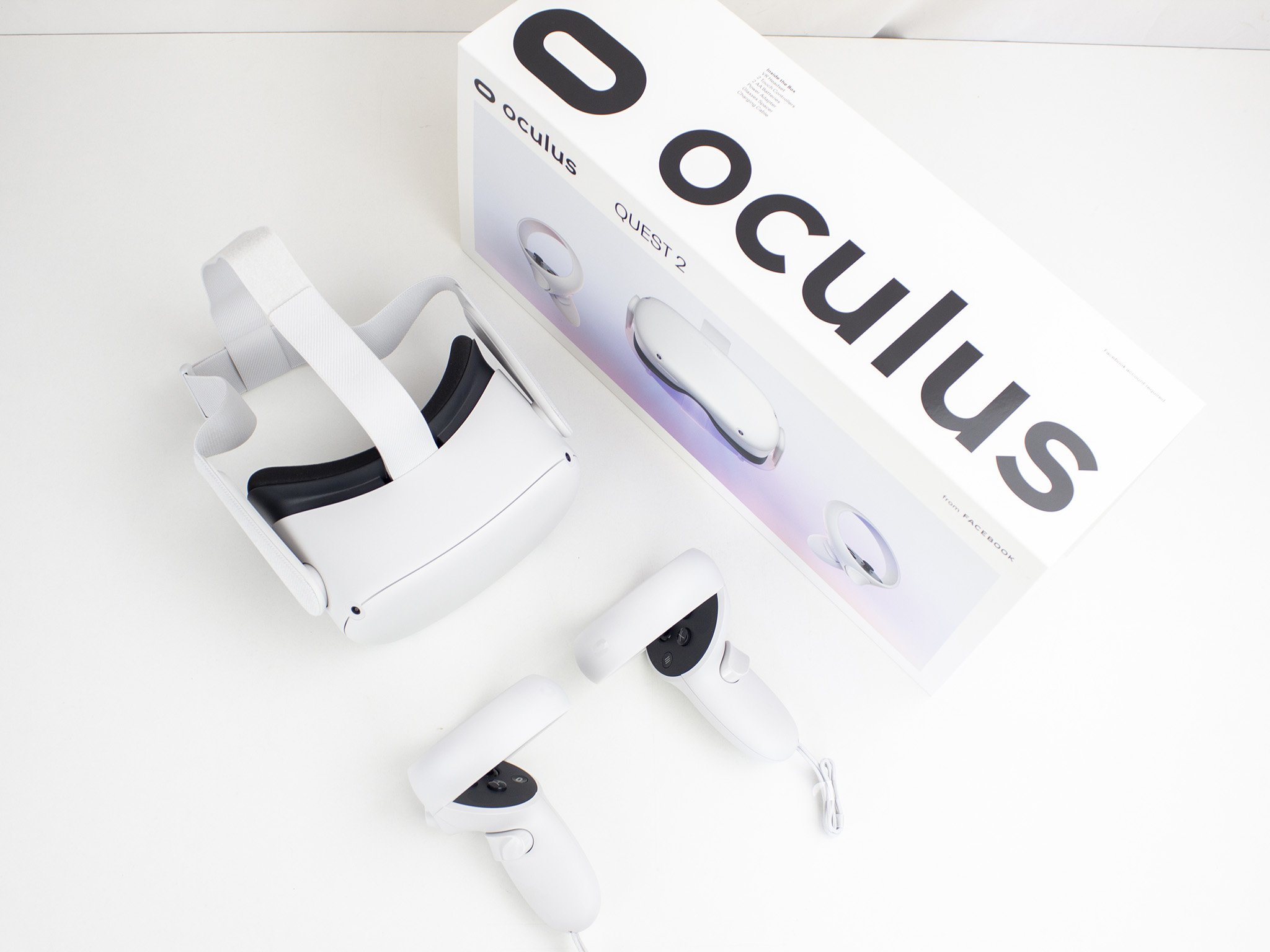
Yes. Absolutely and emphatically, you should buy an Oculus Quest 2 if you're at all even remotely interested in VR gaming. It's a massive step in the right direction and, ultimately, represents the future of the VR industry at large. While there will likely always be a market for PC VR, just as there is for regular "pancake" gaming on a TV, the Oculus Quest 2 is the culmination of everything the VR industry has been working toward for the better part of the last decade.
It's truly a console-quality experience. One that will have you wondering why you would ever deal with a more complicated experience ever again, even if the extra power of a PC can bring about more detailed visuals. That's because it's about more than just an easy experience — it's ultimately about a better experience that allows you to throw away the cares of the real world (annoying technology that never seems to work included) and experience a different reality. A virtual reality.
Based on the negatives, I would normally have docked a full point (for a total of four out of five stars), but the potential of the Oculus Quest 2 easily adds a half-star back to the score. It's one of those times where you can recognize the flaws of a product, understand that these will be deal-breaking flaws for some people, but can look past that because it's going to be the best experience for the vast majority of gamers. That's what makes the Oculus Quest 2 one of the best gaming buys in all of 2020.

Ease of a console, power of VR
The Oculus Quest 2 is the latest standalone VR headset from Facebook, and it offers a compelling way to get into VR gaming and apps without all the hassle and expense of a PC. With better graphics, better ergonomics, faster loading, and more immersive games, the Oculus Quest 2 is the VR console you need.

Nick started with DOS and NES and uses those fond memories of floppy disks and cartridges to fuel his opinions on modern tech. Whether it's VR, smart home gadgets, or something else that beeps and boops, he's been writing about it since 2011. Reach him on Twitter or Instagram @Gwanatu
